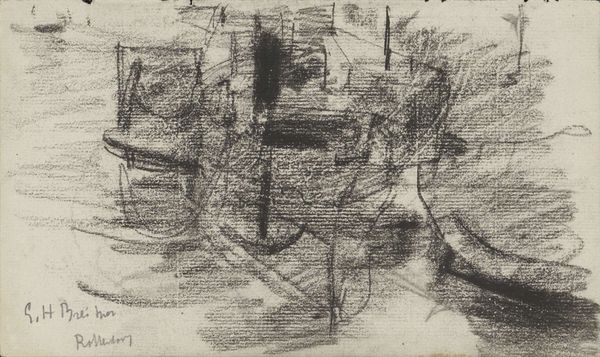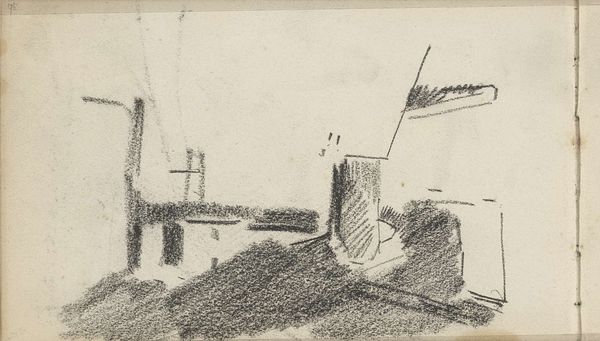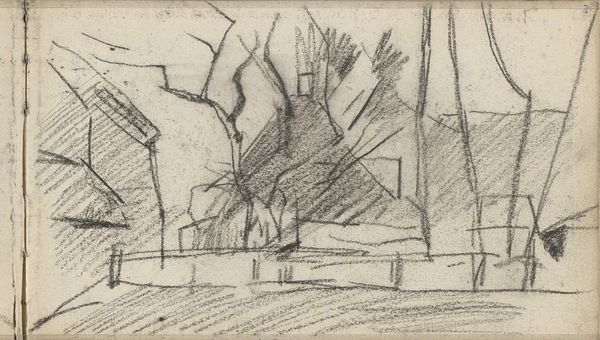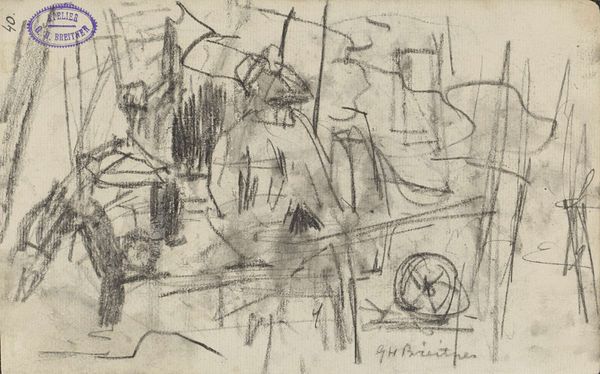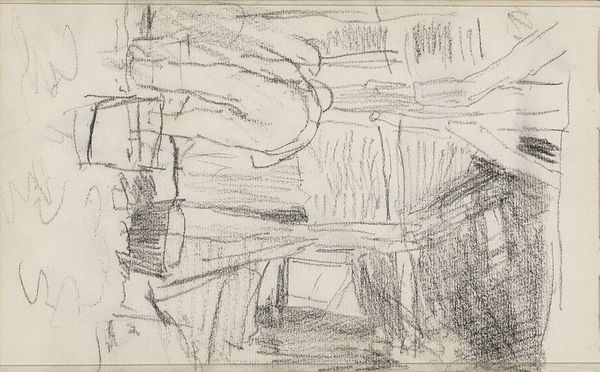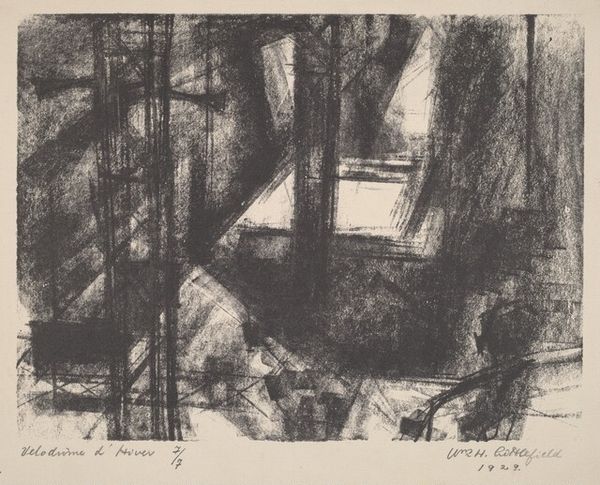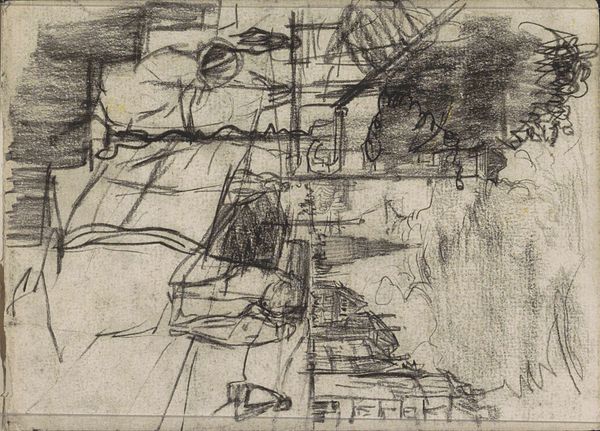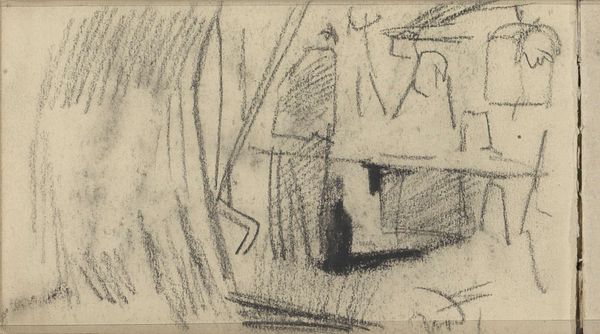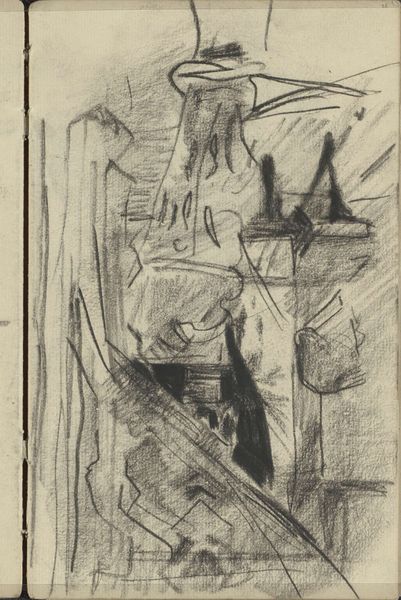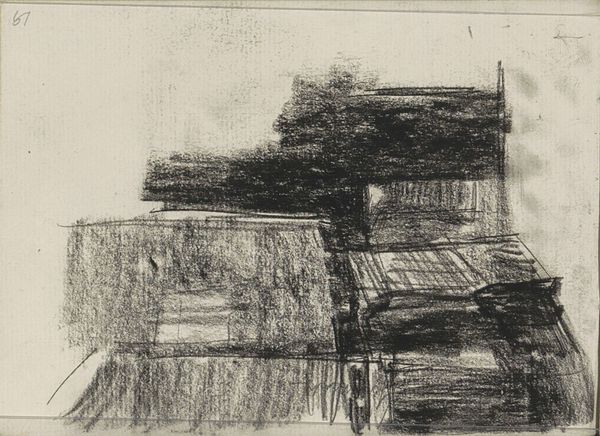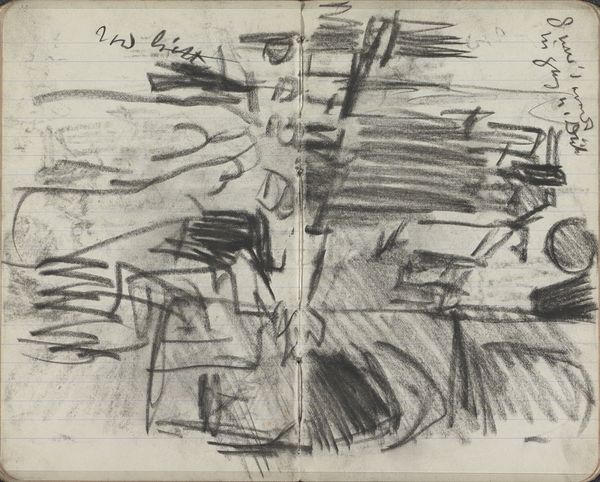
Dimensions: height 127 mm, width 178 mm
Copyright: Rijks Museum: Open Domain
Willem van der Nat made this charcoal drawing of a farm, called "Boerderij", at an unknown date. The image presents a collection of buildings in a rough, impressionistic style. This sketch can tell us a great deal about the status of Dutch rural life at the turn of the century. The Netherlands, with its iconic landscape and traditions, had a strong hold on the popular imagination. We can see the institutionalization of this imagery in art schools of the period. There were concerted attempts to celebrate the Dutch countryside and its traditions, and to cement the image of the rural farmer as the archetypal Dutchman. The artist’s choice of charcoal is also significant, as it is a cheap and readily available medium, which suggests a degree of practicality and perhaps a focus on recording observations rather than creating a finished artwork. By consulting archives and the artist’s other works, as well as studying the art education system and the reception of rural imagery, we can start to reconstruct the socio-cultural context of “Boerderij”.
Comments
No comments
Be the first to comment and join the conversation on the ultimate creative platform.
